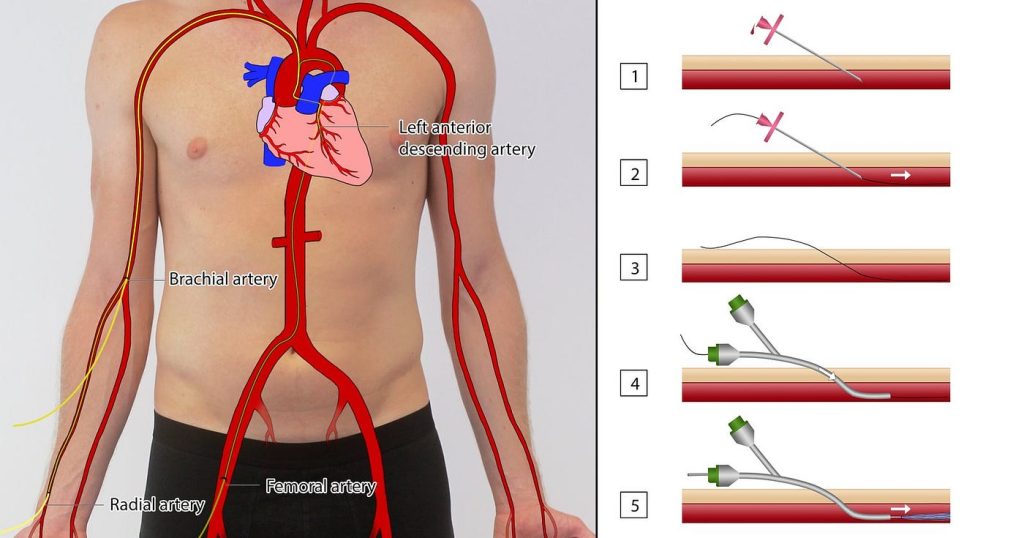Services

Coronary Angiography via the Radial Route: Procedure, Benefits, and Considerations
Coronary angiography is a medical imaging technique used to visualize the blood vessels of the heart. The radial route, which involves accessing the radial artery in the wrist, is a common method for performing this procedure. Here’s an overview of the process, benefits, and considerations related to the radial approach for coronary angiography:
Procedure Overview
- Preparation: The patient is typically given a sedative and local anesthesia is applied to the wrist area.
- Access: A needle is inserted into the radial artery, and a small guide wire is threaded through the artery to the coronary arteries.
- Catheter Insertion: A catheter is advanced over the guide wire to the coronary arteries.
- Contrast Injection: A contrast dye is injected through the catheter, making the coronary arteries visible on X-ray images.
- Imaging: X-ray images are taken to assess the condition of the coronary arteries, identifying blockages or other abnormalities.
- Conclusion: After imaging, the catheter and guide wire are removed, and pressure is applied to the puncture site to prevent bleeding.
Benefits of the Radial Route
- Reduced Bleeding Risk: The radial artery is smaller and closer to the skin surface, reducing the risk of significant bleeding compared to the femoral artery.
- Quicker Recovery: Patients can often sit up and walk soon after the procedure, leading to shorter hospital stays and faster recovery.
- Patient Comfort: The procedure is generally more comfortable for patients, as it allows for greater mobility and less post-procedure bed rest.
Considerations
- Technical Skill: The radial approach can be technically challenging, requiring specific training and expertise.
- Arterial Spasm: The radial artery is more prone to spasm, which can complicate the procedure.
- Vascular Access Issues: In some patients, the radial artery may be too small or may have anatomical variations that make access difficult.
- Experience: Operators’ experience with the radial approach can impact the success and safety of the procedure.
Comparison with Femoral Route
- Bleeding Complications: The femoral approach has a higher risk of major bleeding complications.
- Patient Mobility: Patients undergoing femoral access need to lie flat for several hours post-procedure, which can be uncomfortable and increase the risk of complications such as deep vein thrombosis.
- Procedure Time: The radial approach can sometimes take longer, especially in complex cases or with less experienced operators.
Post-Procedure Care
- Monitoring: Vital signs and the puncture site are monitored to detect any complications early.
- Activity Restrictions: Patients are usually advised to avoid heavy lifting and strenuous activities for a few days.
- Follow-Up: A follow-up appointment is typically scheduled to ensure proper healing and to discuss the results of the angiography.
The radial route for coronary angiography is increasingly preferred due to its safety profile and patient comfort. However, the choice of route depends on individual patient factors and the expertise of the medical team.
admin
0